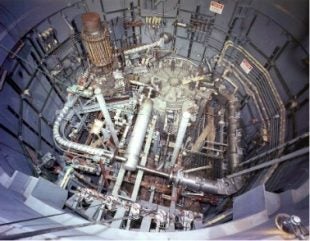
Chemical Engineering Assistant Professor Stephen Lam of UMass Lowell (UML) and researchers from MIT and Stony Brook University are studying molten salt chemistry and the safety and efficiency of reactors based on this technology. The team recently won a three-year, $1m US Department of Energy (DOE) grant to fund their research.
Lam believes the team’s research in the long term could help with the commercialisation of molten salt reactors, which could potentially be significantly safer, more economical and more reliable than conventional reactor systems.
“Our work will reduce the technical risk associated with molten salt reactors,” Lam noted. “Furthermore, it will enable fuel recycling technologies so we can maximise our utilisation of nuclear fuel.” Molten salt reactor systems, which use mainly chloride-based or fluoride-based liquid salt mixtures, can operate at high temperatures. The molten salts are used as the primary coolant and/or fuel for the reactors.
“A key technical challenge in developing molten salt technologies is understanding how chemical properties evolve with temperature and composition, and how to separate nuclear fuel, from fission byproducts, called actinides, in order to recycle the unspent fuel,” said Lam.
The project, which is led by researchers at MIT, with Lam as the principal investigator for UML, is supported by the Oak Ridge, Los Alamos and Brookhaven national laboratories. The grant is part of the investment by the DOE of more than $59m to support 25 American colleges and universities in advancing research and development in nuclear science and technology in the country.
Lam and his co-researchers will combine state-of-the-art methods and capabilities – from particle accelerator experiments at Brookhaven to machine learning-enhanced simulations and laser-induced breakdown spectroscopy in the lab – to investigate the structure and chemical properties of actinides under reactor operating conditions.
“We hope to obtain critical data and gain new insights into the chemical redox [a chemical reaction in which the oxidation states of the reactants change] behaviour of actinides that will enable their separation and recovery and allow us to predict their phase behaviour,” Lam notes. “This knowledge is essential for the safe and economical operation of molten salt reactors and to augment their fuel cycles.”
Lam said this is the first time this type of research is being conducted in the US using a unique combination of experimental, computational and machine learning methods. “It is challenging to predict and obtain data on how low concentration of impurities from fission products would impact the chemistry of molten salt due to limitations in lab measurements and simulation methods,” he explained. “Furthermore, in practice, it is quite challenging to work with actinide materials in the first place.”
Lam plans to hire a PhD student as well as undergraduate research assistants to work on the project. “This will provide UML students opportunities to engage in collaborative research with other universities and national laboratories in the areas of materials simulation, characterisation and machine learning,” he says. “The job will also include travels to the collaborators’ sites as well as attending national conferences.”


